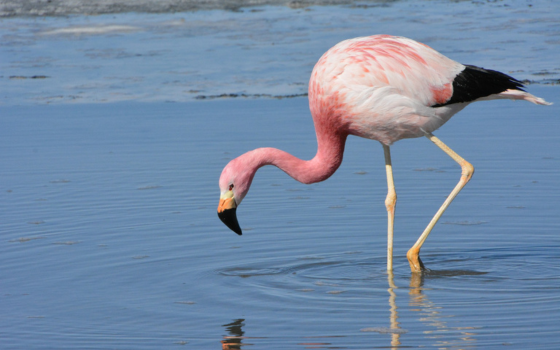Animal Law in Latin America
Angie Vega (2023)

|
|
|
|
|
|
|
|
|
I. Introduction
Latin America is the region that comprises Mexico, Central America, South America, and the Caribbean islands that speak Spanish, Portuguese, or French. Most of these countries have a unitary government, except for Argentina, Brazil, Mexico, and Venezuela, which have federal systems. There are 33 Latin American countries, most of which have a legal system based on civil law. This means that the rules and principles are mainly found in codes as opposed to court decisions like in countries with common law systems. This is because the primary source of laws is the constitution and, then, laws passed by congress. Individual court decisions traditionally do not create a judicial precedent, and they serve as persuasive authority (they clarify the law - they do not create it). However, depending on the country, high court decisions may be binding for all. As time passes and societies evolve, the line between common and civil law distinctions has become more blurred. The region has gained the attention of the rest of the world, as some of the first judicial decisions granting legal rights to individual animals are from Latin American countries.
Traditionally, in the western civil codes, animals have been in the category of “things,” property that can be acquired by individuals. This categorization emanates from Roman Law, where enslaved people and animals were given the status of property, which was later adopted by countries with a civil law system in their civil codes. Generally speaking, the animal legal framework in Latin America is based on laws and judicial decisions that have a protectionist focus based on the property classification. Laws tend to protect either all animals or specific species by regulating or prohibiting different uses, and they are generally framed to avoid unnecessary pain and suffering. For instance, emerging trends have made countries in this region regulate or ban activities such as animal testing, hunting, animal fighting, and the use of animals in circuses. An interesting phenomenon has been occurring since the early 2000s. Latin America has become one of the leading regions in developing jurisprudence that creates precedent regarding the protection of the interest of animals and nature. More recently, the recognition of individual animals as legal persons has occurred in some countries. This includes the Argentinian cases of Sandra the orangutan and Cecilia the chimpanzee, Estrellita the woolly monkey in Ecuador, and Chucho the Andean bear in Colombia (a case which was ultimately struck down but nevertheless is still used as a point of reference by animal rights advocates). In total, around 52 judicial decisions in the region have relevant holdings on different issues regarding the protection of animals or animal rights.
Even though animals are considered property, some countries have elevated their status by defining them as sentient beings, subjects of protection, subjects of rights, or definitions of a similar sort (e.g., Bolivia, Colombia, Peru, Nicaragua) either by legislation enactment or by jurisprudence. The effect of these definitions is that animals have a higher consideration (at least symbolically), and they cannot be subjected to cruel treatment unless the use is expressly allowed by the law (e.g., animal testing, bullfighting, animals used for food). Colombia is the only country in the region that has modified its Civil Code to include the term “sentient beings” below the property categorization definition. This is a very important step for a civil law country, where laws are just below the constitution in the hierarchy of the sources of law.
The fact that these legal systems share similar foundations does not make the development of their legal systems equal. Each has a legal system that has evolved differently, attending to its own history and particular realities. This is also true in the realm of animal law. Bolivia, for example, focuses more on protecting the environment and wildlife. In contrast, Colombia and Argentina seem to have a more comprehensive system of laws and high courts’ decisions protecting companion animals. High courts in Argentina, Chile, Colombia, and Ecuador have heard cases on animal rights. Though Colombia has been the first in the continent to regulate or prohibit different uses of animals, it has not yet been able to declare bullfighting as an illegal practice. On the other hand, Chile and Argentina abolished this practice in the XIX century. Chile addresses farm animal welfare extensively, whereas many countries barely mention the welfare of these animals in their laws. Companion animals have special importance in most countries in this region, with all countries having enacted national anti-cruelty laws except for Mexico. In addition, Argentina and Colombia have decisions recognizing the existence of multispecies families, confirming the importance of pets within the family unit and society. In Argentina, animals are considered victims since 1954.
Latin America has the highest number of countries that have enacted new constitutions in the last 50 years. These new constitutions tend to be an effort to overcome authoritarian governments or social crises. In general, they tend to be more progressive, by strongly defining individual and collective rights and legal mechanisms with the purpose of granting more guarantees and easier access to the legal system. Indirectly, these changes have allowed animal law advocates to be creative when approaching the legal system. For example, a distinct constitutional principle adopted by most constitutions in this region is the governmental and social duty to protect the environment, which is also considered a human right. The constitutional protection of the right to a healthy environment has successfully allowed animal legal advocates to seek the protection of animals in court under the argument that they are not just property, they are part of nature, and, as such, their protection should be guaranteed. The environment is considered a collective right. Therefore, any person can sue in court seeking an injunction to prevent a future collective injury. Other rights established in some of these constitutions that may be useful for animal protection other than the right to a healthy environment (Argentina, Colombia, and Peru), are the right to the protection of the family (Colombia), and the free development of personality, which have also been used as an argument to protect companion animals as part of the family unit.
In addition, constitutional mechanisms such as the writ of habeas corpus (successfully used in Argentina on behalf of more than 600 animals), the writ of Tutela or Amparo, public actions, and compliance actions that had been included in many constitutions to guarantee citizen access to the justice system for the protection of their rights have allowed individuals to file lawsuits under the argument that inflicting harm to an animal or a species constitutes a violation of human rights.
Even though the region has an important development in the production of laws and judicial decisions that have advanced the animal law field, these changes are mostly symbolic. Although there are indeed well-thought-out arguments, some of which even recognize the value of animals not just as part of nature, but as sentient beings, and more recently, as part of their multispecies family, there is a lack of public policy, regulations, and enforcement of these laws, making them ineffective in reality. This is reflected in factors such as low numbers of animal cruelty reports and convictions, stray animal issues, illegal trade of wild animals, and the lack of inspection and enforcement of already lacking farm animal welfare laws. The judicial development regarding animal issues is in the early stages of what seems to be a turn in the legal consideration of animals. Although remarkable, in most instances these decisions apply to the specific animals part of the lawsuit. The systematic change will be more tangible in the long term as more decisions are issued. Perhaps, to the point, to inspire legislative bodies. For now, the call is for countries to regulate and strengthen their existing laws and for those countries that will enact new constitutions in the future, like in the case of Chile, to include animals as sentient beings with their own interests and even recognize them as nonhuman animals’ subjects of rights. This is crucial not just because they have intrinsic value and an interest in their life and well-being that ought to be protected, but because by protecting animals, we are protecting the environment, our health, and the future of the planet.
Search for Materials
Under the Search Materials tab at the purple top navigation, readers can access administrative regulations, cases, articles, and laws from around the globe. Our library contains materials from over 50 countries, from Australia to Zimbabwe. Select your desired country and then limit by legal material type or even topic.
If you have any suggestions on legal materials, topics, animal law websites, or scholarly journals for the center to consider, email us at animallaw@law.msu.edu.







